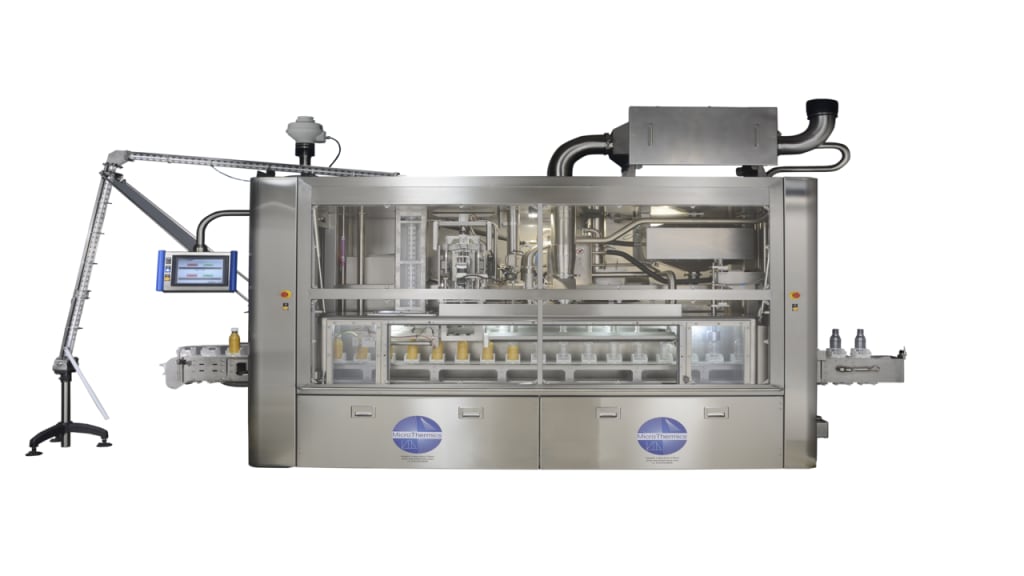
In today's world, consumers demand fresh, high-quality food and beverages with a long shelf life. Aseptic fillers play a crucial role in meeting this demand by ensuring the sterility of products during the filling process. But what exactly are aseptic fillers, and how do they work?
Understanding Aseptic Filling
Aseptic filling is a specialized technique that involves sterilizing both the product and the packaging material before filling. This eliminates microorganisms that can cause spoilage and ensures the product's safety and extended shelf life. Aseptic fillers are machines designed to carry out this critical process efficiently and hygienically.
Benefits of Aseptic Filling
There are several advantages to using aseptic filling for food and beverages:
Extended Shelf Life: Aseptic packaging allows products to be stored at ambient temperatures for extended periods without refrigeration. This translates to reduced spoilage, lower transportation costs, and greater flexibility for retailers and consumers.
Preserves Quality: By eliminating microorganisms, aseptic filling helps maintain the product's taste, color, texture, and nutritional value. Consumers get a product that tastes fresh and retains its original qualities.
Increased Safety: Aseptic filling minimizes the risk of foodborne illnesses by ensuring a sterile environment throughout the filling process. This is especially important for products like low-acid foods that are susceptible to bacterial growth.
Versatility: Aseptic fillers can handle a wide range of products, including milk, juice, broths, soups, sauces, and even some pharmaceutical liquids. This makes them a valuable tool for food and beverage manufacturers looking to expand their product lines.
Types of Aseptic Fillers
Aseptic fillers come in various configurations to suit different production needs and product types. Here's a breakdown of some common types:
Linear Aseptic Fillers: These high-speed machines are ideal for large-scale production. They can handle various containers like cartons, bottles, and pouches.
Rotary Aseptic Fillers: These fillers are suitable for medium-sized production runs and offer greater flexibility in terms of container size and shape.
Aseptic Bag-in-Box Fillers: These compact and cost-effective fillers are ideal for smaller production volumes or products with particulates. They fill sterile bags housed within a larger container like a box or drum.
Factors to Consider When Choosing an Aseptic Filler
When selecting an aseptic filler, several factors need to be considered:
Production Volume: The machine's capacity should match your production requirements.
Product Type: Choose a filler compatible with your product's viscosity, acidity level, and presence of particulates.
Container Type: Ensure the filler can handle your preferred packaging format, such as cartons, bottles, or pouches.
Aseptic Technology: Different fillers employ various sterilization techniques. Research the pros and cons of each method.
Budget: Aseptic fillers are significant investments. Consider your budget and the return on investment the machine will provide.
The Future of Aseptic Filling
The aseptic filling market is constantly evolving, with manufacturers developing more efficient, versatile, and cost-effective solutions. Here are some trends to watch:
Increased Automation: Automation is playing a bigger role in aseptic filling, improving efficiency and minimizing the risk of human error.
Sustainability: Manufacturers are exploring ways to reduce the environmental impact of aseptic filling by minimizing energy consumption and waste generation.
Aseptic Packaging Innovations: New and improved packaging materials are being developed to enhance product protection and extend shelf life further.
Conclusion
Aseptic fillers are essential tools for the food and beverage industry, enabling the production of safe, high-quality products with extended shelf life. As technology continues to advance, aseptic filling is poised to play an even more significant role in the future of food processing. By understanding the benefits and considerations involved, food and beverage manufacturers can leverage aseptic filling to meet consumer demands and ensure the success of their products.
About the Creator
Enjoyed the story? Support the Creator.
Subscribe for free to receive all their stories in your feed. You could also pledge your support or give them a one-off tip, letting them know you appreciate their work.






Comments
There are no comments for this story
Be the first to respond and start the conversation.